#ancient Nabataean city
Explore tagged Tumblr posts
Text



















Swiss explorer Johann Ludwig Burckhardt became the first modern European to lay eyes on the ancient Nabataean city of Petra on August 22, 1812.
#Tomb of the Roman Soldier#Johann Ludwig Burckhardt#22 August 1812#Petra#anniversary#Jordan#Middle East#Asia#archaeology#Nabataean#summer 2007#original photography#architecture#ruins#tourist attraction#landmark#landscape#desert#Al Kazneh#Khazne al-Firaun#travel#vacation#Siq#Palace Tomb#Garden Temple#Royal Tombs#Urn Tomb#ancient Nabataean city#Jordan history
7 notes
·
View notes
Text

Tunnel della luce, Petra, Jordan: The "Tunnel of Light" in Petra, Jordan. It is the ancient main entrance leading to the city of Petra. Its path is approximately 1.2 km, with a width of 3-12m and a height of up to 80m; most of the rock is natural and another part was carved by the Nabataeans. Gabriel Fernandez FB.. Tunnel of Light, also known as the Siq, the stunning entryway to Petra, Jordan’s ancient city. This narrow gorge stretches 1.2 kilometres and slices through striking red sandstone, creating a breathtaking natural corridor that beckons explorers. Nabatean architecture refers to the building traditions of the Nabateans, an ancient Arab people who inhabited northern Arabia and the southern Levant.. Wikipedia
93 notes
·
View notes
Photo
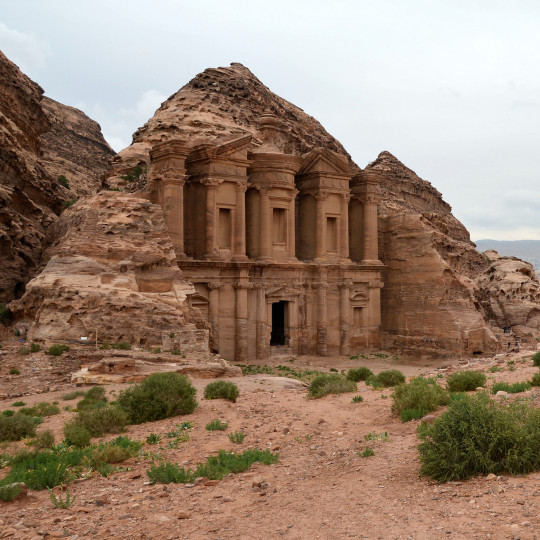
20 Images of Petra
This gallery showcases 20 photos of Petra (Jordan), the former capital of the Nabataean kingdom, which thrived as a trading centre from the 4th century BCE to the 3rd century CE.
Petra is an ancient city carved into a canyon by the Nabataeans, a tribe from Western Arabia skilled in trade and engineering. The ruins of Petra cover an area of 264 square kilometres and include sacred sculptures, monuments, and around 800 tombs, the most famous of which is known as the Treasury. The Treasury is believed to have been the mausoleum of Nabataean King Aretas III and dates back to the 1st century CE.
In 106 CE, the city of Petra was at its peak when the Roman emperor Trajan (r. 98-117 CE) annexed the Kingdom of Nabataea and transformed it into a Roman province named Arabia Petraea. The Romans adopted their city planning, and many new structures were built, including the Roman Soldier Tomb, the Sextius Florentinus Tomb, and the colonnaded street. Petra remained prosperous for over 250 years until the middle of the 4th century CE when an earthquake destroyed many of the city's buildings.
Petra remained hidden for centuries until its rediscovery in 1812. Today, it is Jordan's most renowned tourist attraction and continues to fascinate and inspire visitors from all over the world. It is known as the "Rose City" because of the colour of its stones, and it was designated as a UNESCO World Heritage Site in 1985. Its worldwide recognition was further amplified when it was declared one of the New Seven Wonders of the World in 2007.
Continue reading...
187 notes
·
View notes
Text
Alilat - Day 44
Race: Entity
Arcana: Empress
Alignment: Light-Chaos
June 13th, 2024

A personal favorite kind of demon throughout the series has to be the ones that are completely alien- demons that look like they originated from a psychological study, or living beings that, by all means, look like they shouldn't be real. Demons of this kind are surprisingly few and far between, with most appearing as rather standard depictions of monsters or humanoid beings, but when the artists dip their toes into the strange, almost beyond this world, I fall in love with the designs the instant I lay my eyes on them. One of these, of course, is today's Demon of the Day, and a strange outcast even among the strangest demons throughout the series- the ill-known Mother Goddess of the Arabian Peninsula, Alilat.
Mostly known by one of her many names, al-Lat, Alilat is a relatively obscure goddess in the grand scheme of history. As a pre-islamic goddess worshipped in Arabia, a lot of history surrounding her is hard to parse, even down to the exact areas that her reign was present within, but the general consensus appears to be that she was mainly worshipped in several widespread cults throughout Arabia during its pre-islamic days. Another name of hers, Allat, has actually been the name of several goddesses throughout several different areas in history as well, making her story even more confusing to dig through. The tangled webs of tales and future conflations between her and other deities make her an incredibly confusing deity to sift through the facts about.
Our first recorded mention of Alilat actually comes in the form of a retelling from Greek scholar Herodotus, who, in his book 'Histories' wrote,
"They believe in no other gods except Dionysus and the Heavenly Aphrodite; and they say that they wear their hair as Dionysus does his, cutting it round the head and shaving the temples. They call Dionysus, Orotalt; and Aphrodite, Alilat."
I will admit to copying that passage from Wikipedia, but I'm not about to sift through a copy of such a massive transcript to search for a single line. Interestingly, this transcription by Herodotus actually has a conflict with how most other people drew comparisons- it was commonly believed, and still is today, that Alilat was actually the ancient Arabian's version of Athena. As a goddess of motherhood and fertility, as well as peace, she shares some similar traits to Athena in greek myth, as they also both share a trait as a goddess of war. Where this came from is described in several Safaitic inscriptions, as she used to be invoked by travelers through the region in order to guarantee peace, prosperity, and protection, while warriors at the time would invoke her name to ensure good loot and those attacked would invoke her for vengeance. As one of two principal deities, she seemed to be stuck working overtime a lot.
This is also proven by how scattered her inscriptions are throughout Africa- there are only few given, and most of them are in vastly different areas, giving light to the idea that her cult was widespread but decentralized. And yes, it was a cult, not a formalized religion, as her worship was incredibly sparse. She was revered by many names and even more traditions, including a northern Arabian tribe known as the Qedarites, the widespread peoples of the Nabataeans, and even those residing within the largest Parthian city of its time, Hatra. A lost city known as Iram of the Pillars was also a home of Alilat worship, with them having erected a temple that has now been buried beneath the sands- tragically, all that has been left was a few pillars and a crumbled statue of a lion, but accounts and some small inscriptions on the inside of the temple revealed that it originally had a gorgeous statue of Alilat inside, resembling none other than Athena.


Unfortunately, as time went on, the temple fell into disrepair, having been the target of an attack from Greek forces, then utterly demolished in the fourth century by Christian mobs. You can read more about it on the blog I linked above. However, in terms of Mythology, there's still a bit more to go. Al-Lat wasn't just the deity of a cult, but also appears in Islamic tradition as well, fulfilling a similar purpose to Ba'al in some respects as a false god, though one depicted far more sympathetically. In some retellings, she's not even that, and is instead a daughter of Allah, or even a consort of his in others. Alilat was also the subject of the infamous Satanic Verses incident, something that is beyond the scope of this post, but is an incredibly interesting (and kinda hilarious) rabbit hole to dig through.
In the Book of Idols, an encyclopedia on pre-islamic religion in Africa written by scholar Hisham ibn al-Kalbi, it's written that a group of the Quraysh would chant a set of verses celebrating al-Lat, al-'Uzza, and Manat, of which al-Lat is our subject of interest. A common translation purports the word used to refer to them as a collective, gharaniq, to mean "Most exalted females," but this is hotly debated. Again, see the Satanic Verses incident. Lastly, she is mentioned in the Quran, albeit rarely, and, again, as the subject of the Satanic Verses incident. This is starting to feel like the noodle incident of this post.
I wish I could've shown her uncensored design, but alas, I have no idea if it'd pass the 'Female presenting nipple' guideline, but take it from me when I say that Alilat has an amazing design. Combining her esoteric and hard to sort through lore with her role as a mother goddess was a great call, as it makes her both unique and almost unsettling, even in this series rife with body horror. Even the titties, which I normally see no real point in having on a lot of designs and just feel like gratuitous fanservice (cough cough LAMIA) serve a purpose, as what does a mother do but breastfeed? The idea to portray her almost like a piece of art on a bizarre, floating obelisk was such a cool concept, and it was done perfectly.
I also love how the imagery associated with Alilat on the stone itself resembles stone-age portraits of how a body would look, more specifically the Venus of Willendorf, a famous sculpture that is typically used to represent fertility, tying it all together. Given that this inscription was also carved into stone in Alilat's design, and it ties everything together. Not only does her design look unique even for the series, not only does it tie so many ideas together in neat little bows, not only is it glowing, but it's all also brought together in representing one of the most mysterious and interesting gods in history, and demons in the series.
#shin megami tensei#smt#megaten#persona#daily#alilat#al-lat#also hey i'm deciding to add more persona theming to this blog!!!#going forward i'm gonna be including the arcana as well#where applicable ofc#still mostly gonna be smt focused dw#just wanted to branch out a bit#and make the blog more accessible to persona fans as well cus like. its in the tags lmao
19 notes
·
View notes
Text


~ "Nabataean Goddess Pendant, 1st Century AD. This disc pendant, made of gold with garnet and glass inlays, depicts Atargatis, the chief goddess of northern Syria and surrounding areas in Classical Antiquity. Primarily she was a goddess of fertility, but, as the baalat ('mistress') of her city and people, she was also responsible for their protection and well-being. Nabataeans were an ancient Arab people who inhabited northern Arabia and the Southern Levant. Their settlements in the 1st century AD, gave the name of Nabatene to the borderland between Arabia and Syria, from the Euphrates to the Red Sea. Their loosely controlled trading network, which centered on strings of oases that they controlled had no securely defined boundaries in the surrounding desert. Trajan conquered the Nabataean kingdom, annexing it to the Roman Empire, where their individual culture, easily identified by their characteristic finely potted painted ceramics, became dispersed in the general Greco-Roman culture and was eventually lost." ~
5 notes
·
View notes
Text

Petra & Fremen Sietches
Hi Fellow Dune Fans!
Let's talk about Inspirations for Fremeni Worldbuilding!
ㅤㅤㅤSo I believe it is reasonably well known that the Fremen People were inspired -- in part, at least -- by the Arab Bedouins. And some of the structures we see in Dune 2 bear striking resemblance to an ancient Bedouin city named Petra, which was carved out of the mountains in Jordan. This is because parts of the movie were actually filmed at the cultural center there!
ㅤㅤㅤPetra was built in the 4th Century B.C.E. by a subset of Bedouins called the Nabataeans, who were a nomadic people that gained extensive wealth by trading spices (uh huh, yeah, exactly). This wealth made them increasingly appealing targets to their enemies, so the Nabataeans decided to settle in the mountainous regions of Jordan and eventually carved a whole city of out of the sandstone cliffs. Everything from monuments and tombs to multi-room houses were hand carved from the rock, then covered with stucco and painted in bright colors. The city follows the natural curve of the Siq, a narrow and winding gorge that lead into Petra's city-center (quite similar to the natural crevice that leads to the entrance of the Fremen Sietch in the film).
ㅤㅤㅤPetra was significant for so many reason, but one of its most influential elements (and one of the things about it that inspired Herbert) was its water irrigation system! The city had specifically built rock-cut channels along the Siq to collect as much rain water as possible in the sparse times of year that it actually rained. These channels led to subterranean pipes that funneled all water into underground cisterns, which preserved the water from theft, pollution, and evaporation. Sound familiar?
ㅤㅤㅤBecause of their mastery over water resources in the region, the Nabataeans (and their city) rose to control the flow of trade along most of the Incense Road, which stretched from Southern Arabia through Petra to Gaza. Their access to water was both highly sought after as a respite by those traveling the trade route, and a deterrent for any forces thinking to attack the city. The odds of overcoming a fortified and water-rich place like Petra as an attacker in the desert was… slim.
ㅤㅤㅤIn addition to their water-wealth, Nabataens also grew flush with culture and art as a result of so many worldly traders passing through their city. Petra was designed to align with the path of the sun across the sky, so on certain pivotal times of year, important buildings within the city will have direct sunlight falling on them. The structures were all carved with an evolving combination of influences from other parts of the world, like Egypt, China, and Greece. At the height of its glory under Nabataean rule, Petra was a culture center of the ancient world.
ㅤㅤㅤAll these fascinating elements make me think of Arrakis, and the Fremen Peoples. Of who they might have been before House Harkonnen won the siridar fief of Arrakis and brought both ecological and sociological persecution to the planet. The beautiful structures they might have built, the complex cultural heritage they shared among northern and southern tribes, the innovation of a People who understood their home better than any other. A People who weren't fighting for survival, who could be so much more…
ㅤㅤㅤIn Dune, the water catchbasins are sacred spaces, representing both the sacrifices and hopes of an entire People. The elaborate nature of these holy places cannot be overstated, and the sheer ingenuity of Fremeni methods for prosperity deserves recognition beyond how it stymied the endeavors of a bloodthirsty race of slavers and thieves.
#Fremen#Dune#Arrakis#Dune movie#The Fremen#anyway thanks for coming to my TedTalk#Fandom: Dune#c: Stilgar Ben Fifrawi#Stilgar: headcanon#long post tw
10 notes
·
View notes
Text
AlUla: The Middle East's once inaccessible ancient wonder (BBC)
Set in a stunning valley, this ancient desert oasis has birthed flourishing civilisations. Now, after years of being closed to outsiders, it's starting to reveal its secrets.
As a photographer, I've always been drawn to the unique way that light in the desert stretches, bounces off the sand and rock and illuminates the plains. There is a stillness in these landscapes that I've come to crave, but I'm also fascinated by the relationships people build with deserts. In the Middle East, humans have found ways to survive and even thrive in these harsh environments for millennia, and perhaps nowhere is this ingenuity more evident than in one of the Arabian Peninsula's most significant cultural cradles: AlUla (sometimes written "al-Ula").
Set in the AlUla Valley amid the soaring sandstone and granite mountains of north-western Saudi Arabia's Hijaz region, this ancient desert oasis has supported human life for the past 200,000 years. The area's fertile soil and access to water amid the arid, mountainous desert helped multiple civilisations blossom. The Dadan and Lihyan kingdoms that flourished here between 800 and 100 BCE were followed by Hegra, an important city in the Nabataean civilisation whose capital, Petra, was located farther north, in modern-day Jordan.
Yet, it wasn't until 2019 when Saudi Arabia began issuing tourist visas for non-religious travel that foreign visitors were able to witness this long closed-off and unexplored valley. Today, echoes of AlUla's long and mysterious past are everywhere, and as archaeologists slowly begin to uncover the many burial mounds, tombs and rock inscriptions scattered throughout AlUla's numerous sites, this ancient oasis is finally starting to reveal its secrets.
Read more
2 notes
·
View notes
Text
Sokhna shore Excursions
Sokhna shore Excursions offer a rich tapestry of cultural experiences that allow visitors to immerse themselves in the local heritage. From exploring ancient Egyptian temples to experiencing the vibrant markets, there is something to captivate every traveler. Additionally, guided tours provide insights into the region's history and traditions, making for a truly enriching journey.
Embarking on the Bayadah Island Tour From MSC Splendida Cruise offers an unforgettable experience with its pristine beaches and crystal-clear waters perfect for snorkeling. Guests will enjoy the convenience of a guided excursion, ensuring a hassle-free day filled with relaxation and natural beauty. Additionally, the tour provides opportunities to explore local culture and cuisine, making it a comprehensive and enriching adventure.
Cairo Tours From El Sokhna Port Cairo, the capital of Egypt, has been a pivotal center of culture and politics for centuries. It is home to ancient wonders such as the Great Pyramids of Giza and the Sphinx, which are testaments to its rich historical legacy. As a city that has seen the rise and fall of empires, Cairo offers a glimpse into the past while continuing to influence the modern world.
Giza Pyramids & Sakkara Tours from El Sokhna Port The tour includes a visit to the Giza Pyramids, Sakkara, and Memphis. It also includes lunch at a local restaurant. The tour is suitable for all ages and is guided by a professional tour guide.
. Hegra, Alula, and Elephant Rock From MSC Cruise Hegra is an ancient city located in Saudi Arabia. Alula is a port city in Eritrea. Elephant Rock is a towering rock formation in South Africa.
Iona Yanbu Snorkeling from Msc Splendida cruise The tour was organized by the ship's staff. It was an excellent experience, and we saw a wide variety of fish and coral. The staff were very helpful and friendly.
MSC Splendida Cruise From Sokhna Port To Wadi Rum offers a luxurious cruise experience. Guests can enjoy a variety of activities, including spa treatments, shopping, and shore excursions. The cruise also includes a stop in Wadi Rum, where guests can enjoy the stunning views and explore the ancient ruins.
MSC Splendida From Sokhna Port To Jeddah The ship will depart on Saturday, July 2nd at 10:00 AM. Passengers should arrive at least 90 minutes before departure. All passengers must present a valid passport and visa.
MSC Splendida From Sokhna Port To Petra Petra, an ancient city in Jordan, is renowned for its rock-cut architecture and water conduit system. Once the thriving capital of the Nabataean Kingdom, it served as a crucial crossroads for trade routes linking Arabia, Egypt, and the Levant. Today, it stands as a UNESCO World Heritage site and one of the New Seven Wonders of the World, attracting visitors from all around the globe.

MSC Splendida From Sokhna Port To Yanbu Sokhna Port, located on the Red Sea, is one of Egypt's major ports and serves as a vital hub for maritime trade in the region. Its strategic location provides a key link between Asia and Europe, making it an important gateway for international shipping routes. The port's modern facilities and infrastructure support efficient cargo handling and passenger services, contributing significantly to the country's economy and tourism.
Pyramids, Memphis and Dahshur Tours From El Sokhna Port The tour includes a visit to the Great Pyramids of Giza, the Sphinx and the Valley Temple. The tour also visits the ancient city of Memphis and the Bent Pyramid at Dahshur. The tour concludes with a visit to the Step Pyramid of Sakkara.
One of our Shore Excursions in sokhna
Take a fascinating Cairo excursion from Sokhna Port To Pyramids, Memphis, and Dahshur Tours From El Sokhna Port, Discover Cairo’s countless attractions and delve deep into ancient Egyptian History, scout Dahshur and Memphis City, Move To Sakkara, visit the great monuments located at the Giza Plateau. experience riding Camel or taking Horse Tours, and Finally return to El Sokhna Cruise ship.
A full-day Pyramids, Memphis, and Dahshur Tours from Ain Sokhna port start a full-day tour to visit Dahshur to see the 2 Pyramids of King Snefru the Red Pyramid, and the Bent Pyramid after that transfer to Memphis the first capital of ancient Egypt to see the open-air museum and the colossal statue of King Ramses II after that drive to Sakkara to visit the first Pyramid ever built for King Zoser then visit the private tombs of the high officials to see the daily life scenes after that transfer to visit the most famous Giza Pyramids, the Sphinx, and the valley temple then you will be transferred to the cruise ship In Al Sokhna.
The suggested 1-day tours will include the following:
§ Private speaking Egyptologist tour guide.
§ Transportation with A/C van to all the mentioned sites.
§ Entrance fees to all the mentioned sites.
§ Lunch meal at a local restaurant in Cairo.
§ Mineral water.
§ Service charge and tax.
The 1day tours will not include the following:
§ Visa entry to Egypt.
§ Optional tours.
§ Any other items not mentioned.
§ Tipping kitty.
· · For More
· · Sokhna shore Excursions: https://bit.ly/3qIBhGH
· · Email: [email protected]
· · Call us: https://wa.me/201143320224
0 notes
Text
पेट्रा, प्राचीन रहस्यों का प्रवेशद्वार। – वर्ल्ड प्ले इन्फो
0 notes
Text
Discover the Hidden Gems of Arabia: Unforgettable Journeys
The Arabian Peninsula, a land of ancient history and mesmerizing landscapes, offers a wealth of undiscovered treasures waiting to be explored. Beyond the glitz and glamour of bustling metropolises like Dubai and Riyadh lies a realm of untouched beauty, vibrant traditions, and unforgettable experiences. Whether you're a history enthusiast, nature lover, or adventure seeker, Arabia’s hidden gems promise journeys unlike any other. Let’s uncover some of these remarkable destinations that are sure to ignite your wanderlust Travel and Tourism Companies in Dubai
Al-Ula, Saudi Arabia: A Journey Through Time
Nestled in the northwestern region of Saudi Arabia, Al-Ula is an archaeological and cultural wonder. This ancient city is home to the Kingdom’s first UNESCO World Heritage site, Hegra, also known as Mada’in Salih. Its sandstone tombs, intricately carved by the Nabataeans, rival the grandeur of Petra in Jordan. Beyond its historical allure, Al-Ula captivates visitors with its dramatic rock formations, lush oases, and immersive cultural events like the Winter at Tantora festival. Travelers can explore the region through guided tours, hot air balloon rides, or even stargazing in the serene desert skies.
The Empty Quarter: The World’s Largest Sand Desert
Spanning four countries—Saudi Arabia, Oman, the UAE, and Yemen—the Rub’ al Khali, or Empty Quarter, is the epitome of raw, untamed beauty. As the largest contiguous sand desert on Earth, it offers endless golden dunes, some towering over 250 meters high. Adventurers can embark on thrilling dune bashing excursions, camel treks, or camp under the stars in luxurious desert retreats. Despite its name, the Empty Quarter is far from barren; its hidden water sources and wildlife are a testament to the resilience of life in harsh conditions.
Ras Al Jinz, Oman: Witness Nature’s Miracle
For wildlife enthusiasts, Ras Al Jinz in Oman is a must-visit. This secluded beach is a sanctuary for endangered green turtles, which come ashore to lay their eggs. The Ras Al Jinz Turtle Reserve offers guided night tours, providing a rare opportunity to witness this incredible natural spectacle. Beyond the turtles, Oman’s coastline boasts crystal-clear waters, rugged cliffs, and vibrant marine life, making it a haven for divers and snorkelers.
Wadi Shab, Oman: A Hidden Oasis
Wadi Shab, a spectacular canyon in Oman, is a paradise for hikers and nature lovers. Accessible only by boat and foot, this hidden oasis rewards adventurers with turquoise pools, lush vegetation, and even a secret waterfall inside a cave. The journey to Wadi Shab is as captivating as the destination, with stunning views of the surrounding cliffs and the Arabian Sea.
Khor Fakkan, UAE: A Coastal Haven
Tucked away on the eastern coast of the UAE, Khor Fakkan is a serene escape from the urban hustle. Its pristine beaches, framed by the Hajar Mountains, are perfect for relaxation and water activities like kayaking, snorkeling, and diving. The area is also home to the Al Rafisah Dam, where visitors can enjoy picturesque views and family-friendly facilities. For history buffs, the nearby Khor Fakkan Amphitheatre and historical sites add a cultural dimension to the experience.
Jabal Akhdar, Oman: The Green Mountain
Jabal Akhdar, or the Green Mountain, in Oman, offers a refreshing contrast to the region’s desert landscapes. Known for its terraced farms, blooming roses, and cool climate, this mountainous region is perfect for trekking and cultural exploration. Visitors can indulge in the local tradition of rose water production or explore ancient villages like Misfat Al Abriyeen, where time seems to stand still.
Farasan Islands, Saudi Arabia: A Marine Paradise
Off the coast of Saudi Arabia’s Jizan region lies the Farasan Islands, an archipelago of pristine beauty. With their crystal-clear waters, vibrant coral reefs, and diverse marine life, these islands are a haven for snorkelers and divers. The islands also boast historical sites, such as Ottoman-era buildings, and are home to rare wildlife, including the endangered Farasan gazelle.
Liwa Oasis, UAE: A Desert Wonderland
Located on the edge of the Rub’ al Khali, the Liwa Oasis in the UAE offers a blend of natural beauty and cultural heritage. Known for its towering sand dunes, including the famous Tal Moreeb (Moreeb Dune), the oasis is a playground for off-road enthusiasts and photographers. Visitors can also experience traditional Emirati hospitality at desert resorts, sample local cuisine, and learn about Bedouin traditions.
Socotra, Yemen: A Land of Alien Beauty
Often referred to as the "Galapagos of the Indian Ocean," Socotra is an otherworldly destination brimming with unique flora and fauna. Its dragon’s blood trees, white sand beaches, and azure lagoons create a surreal landscape that feels untouched by time. Despite its remote location, Socotra offers a wealth of experiences, from hiking and birdwatching to cultural exchanges with the island’s friendly inhabitants.
Salalah, Oman: A Tropical Retreat
During the Khareef (monsoon) season, Salalah transforms into a lush, green paradise unlike any other in Arabia. Its rolling hills, waterfalls, and misty valleys create a tropical retreat that attracts visitors from around the world. The city is also rich in history, with landmarks like the Al Baleed Archaeological Park and the Frankincense Land Museum. Visitors can enjoy local delicacies, explore vibrant souks, and relax on pristine beaches.Arabia’s hidden gems offer travelers a chance to explore a side of the region that’s steeped in natural beauty, cultural richness, and historical significance. From the ancient wonders of Al-Ula to the surreal landscapes of Socotra, these destinations promise unforgettable journeys that leave a lasting impression. Whether you’re seeking adventure, tranquility, or a deeper connection to the past, the Arabian Peninsula is ready to unveil its treasures to those willing to venture off the beaten path travel companies in dubai
0 notes
Text
Top places to Visit in Saudi Arabia
Explore Saudi Arabia’s top destinations, including AlUla’s ancient beauty, Jeddah’s coastal charm, Riyadh’s modern landmarks, and the breathtaking landscapes of the Asir Mountains. Uncover a blend of culture, history, and adventure!

Saudi Arabia’s origination as a nation-state dates back to 1727, with the formation of the Emirate of Diriyah. The pre-Islamic Arabian, which constitutes modern Saudi Arabia, has been the site of several ancient cultures and civilizations. The early history of Saudi Arabia shows signs of the primary traces of human activity in the world.
Modern-day Saudi Arabia has been the epicentre of the world’s second-largest religion, Islam. The Islamic prophet Muhammad united the people of Arabia, establishing a unified Islamic religious state in the early stages of the 7th century.
Saudi Arabia, the fourth largest state in the Arab world, has a reported population of 37,473,929, a significant rise of 1.43% from 2023.
How To Get Tourist Visa for Saudi Arabia

Saudi Arabia recently began welcoming international visitors, revealing a treasure trove of attractions. The country boasts Nabatean tombs that stand as worthy rivals to Petra, pristine dive sites that can easily compete with Egypt’s best, and grand canyons as breathtaking as those found in America’s national parks. Additionally, Saudi Arabia remains a prominent destination for religious tourism and pilgrimage.
Nationals from 68 countries are eligible to apply for the Saudi Arabia e-Visa online. GCC residents with a residency visa valid for at least three months can also use the online application system. Even though some foreign nationals can obtain a Saudi visa upon arrival, applying for a tourist visa to Saudi Arabia is advisable to avoid long airport lines and potential delays.
The Top Stunning Destinations in Arabia Wadi Al Disah

Located near Tabuk in northern Saudi Arabia, resembles a surreal blend of the Grand Canyon and Monument Valley. This breathtaking valley is filled with towering sandstone columns set against a vast desert backdrop, where the amber sands give way to lush high grasses and palm trees. Whether you explore on foot or by four-wheel drive, be sure to visit at sunset when the sculpted rock formations are bathed in a magical, ethereal light.
Hegra

Few sights in Saudi Arabia are as iconic as the monumental rock-cut tombs in the desert of Hegra, near Al Ula. These 131 mysterious mausoleums, reminiscent of the ancient ruins of Petra, were crafted in the Emirate of Diriyah by the Nabataeans, the same nomadic traders who built Jordan’s world-famous site. Unlike Petra, which sees over a million visitors annually, Hegra remains undiscovered mainly, attracting more wildlife than tourists. However, this could soon change, as luxury hotel brands like Aman, Banyan Tree, and Habitas are set to open eco-friendly and heritage-focused camps in the area, positioning Hegra as a significant destination in the coming years.
Umluj
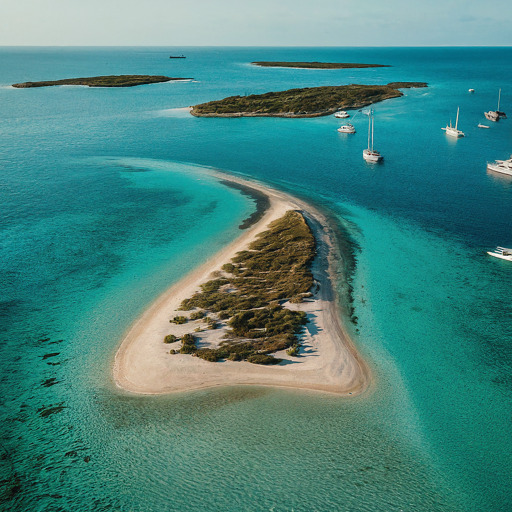
It’s easy to understand why this coastal town and its surrounding area are often dubbed the “Maldives of Saudi Arabia.” Just north of the town, 104 atolls dot a turquoise stretch of the Red Sea. The main attraction in Umluj is island-hopping, where you might spot dolphins en route to islands like Jabal Hassan, which is perfect for snorkelling, fishing, or simply relaxing on white sandbars. The area’s tranquillity mirrors the calmness of the dugongs and hawksbill turtles that swim around these islands. Umluj is also a world-class diving destination, offering a vibrant underwater scene with 1,200 fish species and 300 types of coral — four times more than what the Caribbean offers. While sustainable resorts are being developed on a few islands, most of this region remains an unspoiled natural aquarium.
Al Balad, Jeddah

Many Saudi cities feature a historic district known as Al Balad, where the air is infused with exotic spices, and the melodic call to prayer echoes through the streets. In Jeddah, the vibrant port city, Al Balad stands out as the most picturesque. This area is a maze of narrow alleys lined with ancient coral-stone merchant houses, hosting oud vendors, traditional bakeries scented with cloves, and the bustling Souq Al Alawi. Al Balad has been declared a UNESCO World Heritage site in 2014, and numerous grand but deteriorating mansions have been thoughtfully restored, including the impressive 106-room Nasseef House.
Today, it serves as a museum and cultural centre, featuring art and photography exhibitions as well as academic lectures. Additionally, galleries, mangour woodcraft workshops, and trendy cafés are revitalizing formerly abandoned buildings, ensuring that this seventh-century district thrives with a bright future.
The Edge of the World

The Edge of the World” is a breathtaking natural landmark located near Riyadh, Saudi Arabia. Officially known as Jebel Fihrayn, this dramatic cliff formation offers stunning panoramic views of the desert landscape. Rising sharply from the barren earth, the cliffs provide a surreal and awe-inspiring experience, making visitors feel like they are standing on the world’s edge. This area is a favourite among hikers, offering trails that ascend to the summit, where you can gaze upon the endless horizon stretching out before you. The Edge of the World is a must-visit destination for adventurers and nature lovers looking to explore one of Saudi Arabia’s most iconic natural wonders.
Diriyah

Diriyah, the ancient desert city near Riyadh, is a captivating blend of history and culture. Nestled in the green oasis of Wadi Hanifa, it was once a cultural hub and crossroads for pilgrims and traders, as well as the ancestral home of the Saudi royal family. Today, Diriyah’s museums, including Salwa Palace, showcase the city’s rich past. Amidst its striking mud-brick architecture and palm-lined streets, traditional Najdi dishes like gereesh bil laban are served in local restaurants and coffee shops, offering a unique cultural experience.
Al Qarah Mountain, Al Ahsa

Al Qarah, brushing the eastern edge of the Shadqam plateau, is a hidden gem in the kingdom, known for its raw natural beauty. This majestic site features sand-sculpted caves and canyons shaped over millennia, best viewed from the 670-foot summit of Al Qarah mountain. As you climb its limestone cliffs, you’ll discover honeycomb caves, nooks, and passageways that offer a fascinating journey and breathtaking panoramic views. The place names here reflect a deep connection to nature, with Al Ahsa meaning’ murmuring streams’ and Hofuf translating to ‘whistling wind.’ Surrounding the mountains are palm tree farms and charming villages, where artisanal shops and restaurants provide a relaxed, shaded retreat.
Rijal Almaa

Often called the Gingerbread Village, Rijal Almaa is known for its distinctive blocky stone buildings with vibrant shutters nestled within a lush, green landscape. This village has long attracted travellers interested in its rich culture and history. However, it’s more than just a picturesque spot. The village is home to the Qahtan tribe, renowned for the colourful outfits and floral crowns worn by the men, which are celebrated each August at the Flowerman Festival.
Conclusion
In summary, Saudi Arabia is a land of striking contrasts and hidden gems, where ancient history meets modern wonders. From peaceful deserts and towering mountains to bustling cities and unspoiled coastlines, the Kingdom offers a wealth of experiences for every traveller. Whether you’re captivated by its rich cultural heritage, breathtaking natural scenery, or the deep spiritual significance of its holy sites, Saudi Arabia welcomes you to explore its unique charm and uncover its stories. With the nation increasingly opening its doors to the world, now is the ideal time to discover the enchanting appeal of this once-secluded destination.
Frequently Asked Question
What time of year is most suitable for a trip to Saudi Arabia?
The best time to visit Saudi Arabia is during the cooler months, from October to March. The weather is more comfortable for exploring the outdoor attractions, such as deserts, mountains, and historical sites. Summers can be scorching, particularly in desert regions.
How to obtain a tourist visa upon arrival in Saudi Arabia?
While certain nationalities are eligible for a visa on arrival, it’s advisable to apply for a Saudi tourist E-Visa online ahead of your trip. This ensures a faster and more convenient entry experience, helping you avoid lengthy airport queues.
What are the must-visit historical sites in Saudi Arabia?
Historical sites include the ancient city of Diriyah, the Nabatean tombs at Hegra, and the UNESCO-listed district of Al Balad in Jeddah. These sites provide a profound understanding of Saudi Arabia’s rich cultural and historical heritage.
Is Saudi Arabia a safe destination for tourists? Saudi Arabia is generally safe for tourists. The government has taken substantial measures to ensure their safety and security.
What activities can I enjoy in Saudi Arabia besides visiting historical sites?
Besides historical sites, Saudi Arabia offers a range of activities, including diving in the Red Sea, exploring the majestic landscapes of Wadi Al Disah, hiking at the Edge of the World, and experiencing unique cultural festivals in places like Rijal. Almaa. The country also offers opportunities for shopping, dining, and enjoying the vibrant city life in Riyadh and Jeddah.
#touristsitesinsaudiarabia#touristattractioninsaudiarabia#wheretovisitinsaudiarabia#touristspotsinsaudiarabia#top10beautifulplacesinsaudiarabia#sauditouristplaces
0 notes
Text
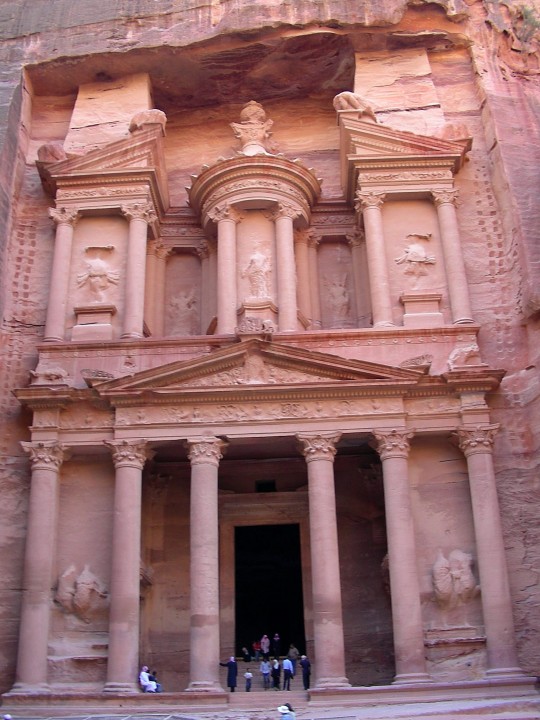
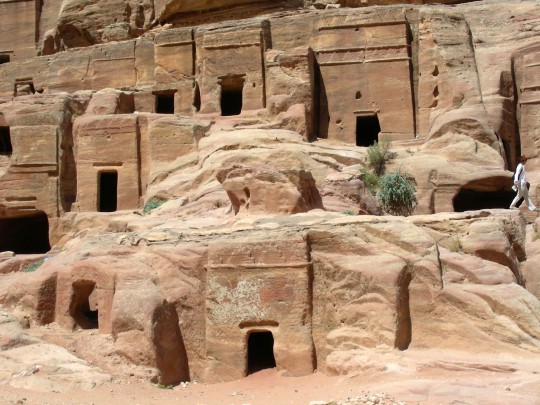
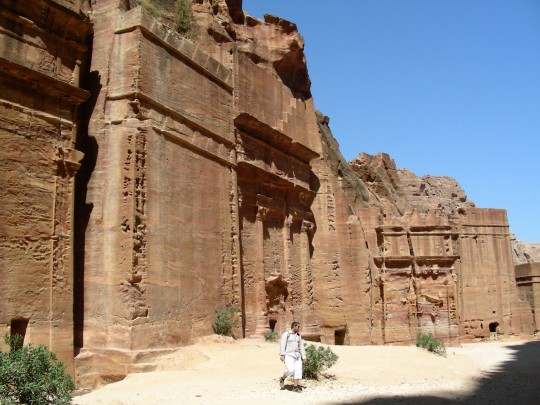

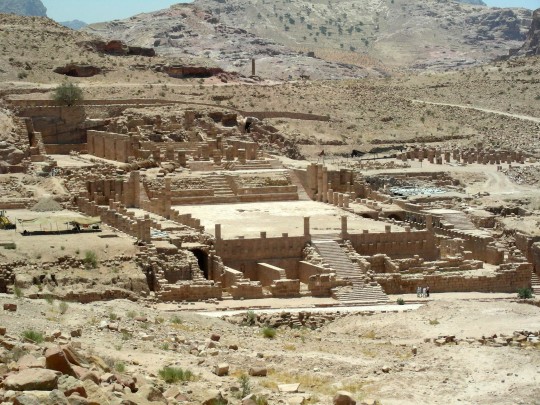
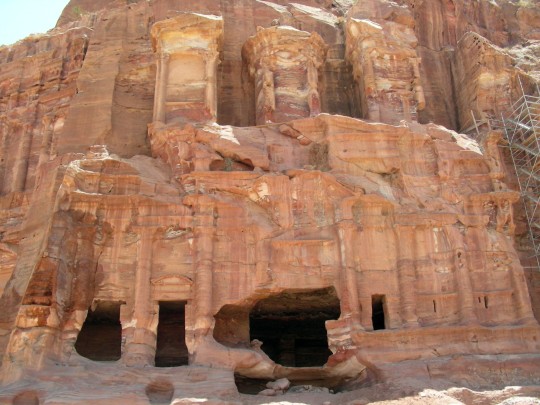
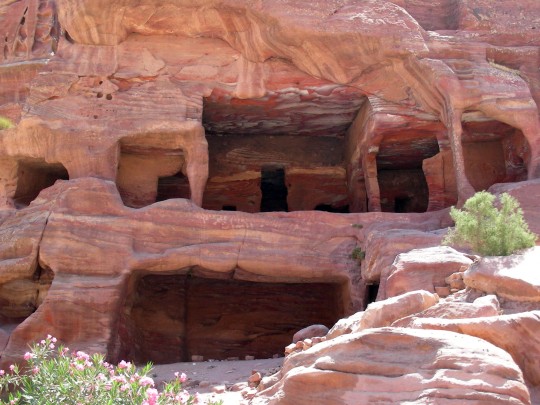
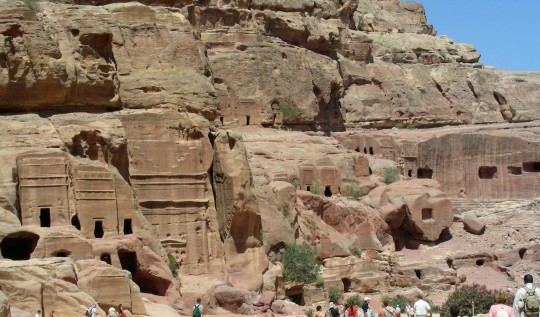


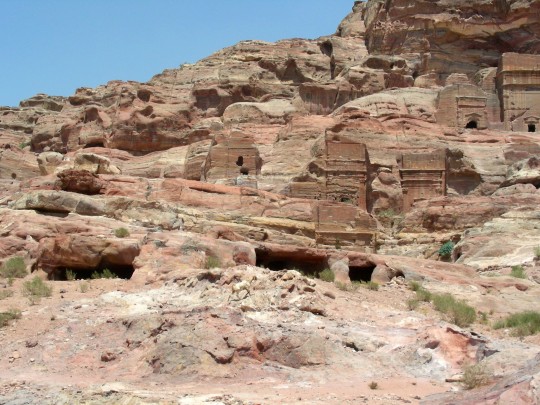
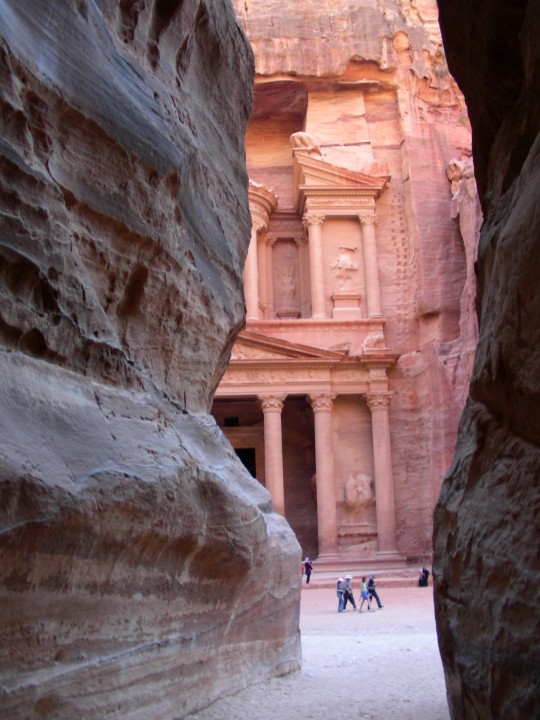



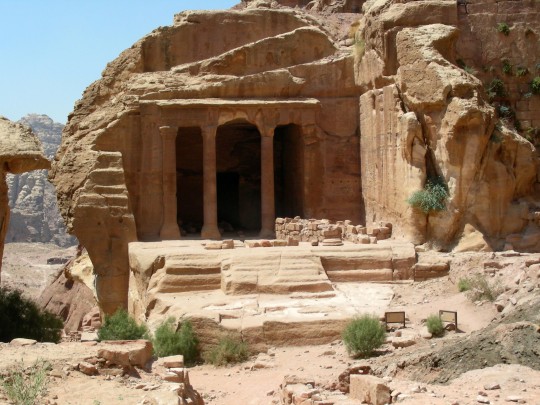
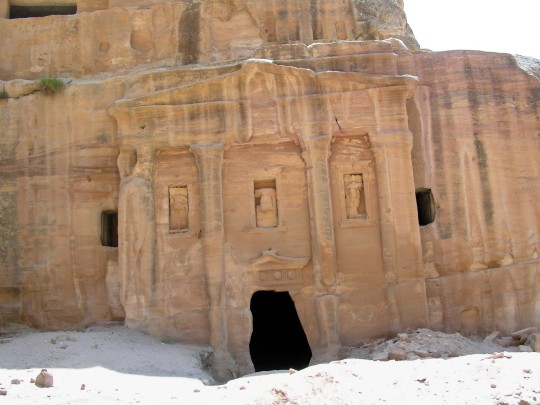


Swiss explorer Johann Ludwig Burckhardt became the first modern European to lay eyes on the ancient Nabataean city of Petra on August 22, 1812.
#Tomb of the Roman Soldier#Johann Ludwig Burckhardt#22 August 1812#Petra#anniversary#Jordan#Middle East#Asia#archaeology#Nabataean#summer 2007#original photography#architecture#ruins#tourist attraction#landmark#landscape#desert#Al Kazneh#Khazne al-Firaun#travel#vacation#Siq#Palace Tomb#Garden Temple#Royal Tombs#Urn Tomb#ancient Nabataean city#Jordan history
6 notes
·
View notes
Text
Discover the Hidden Treasures of AlUla
The Kingdom of Saudi Arabia, widely recognised for its sacred cities of Makkah and Medina, has so much more to offer than many realise. From expansive deserts to crystal-clear waters brimming with coral reefs and countless royal palaces, Saudi Arabia is a land full of surprises.

Since opening its doors to leisure tourism in September 2019, Saudi has quickly become a fascinating, offbeat destination. It offers a blend of rich heritage, welcoming locals, and diverse natural landscapes, including some of the world's most pristine diving spots in the Red Sea. Visitors can experience a blend of mystery, adventure, and deep cultural immersion, along with delicious Arabian coffee and mouth-watering Middle Eastern cuisine. Saudi Arabia promises unforgettable stories and unique adventures.
One destination that truly captivates travellers is the ancient city of AlUla.
Saudi Arabia's Hidden Gem

AlUla, tucked away in the northwestern desert, boasts over 200,000 years of human history. This walled city, dotted with oases, feels untouched by time. It invites visitors to explore ancient tombs, incredible rock formations, and awe-inspiring art installations, making it a must-visit for those with a passion for archaeology and history.
What Makes AlUla Unique?
AlUla’s stunning cliffs, canyons, ancient petroglyphs, and rock art make it an unparalleled destination for natural and cultural wonders. With its open landscapes, free from skyscrapers and traffic, AlUla offers unobstructed, breathtaking views. The dramatic contrast between the arid desert and the lush oases with date farms creates a striking visual experience that you won’t find elsewhere.
A Living Museum
Hegra, Saudi Arabia's first UNESCO World Heritage Site, offers a fascinating glimpse into the region's past. Once part of the ancient Nabataean Kingdom, Hegra was a vital trade route and is now considered an archaeologist’s dream, with over 23,000 sites of archaeological interest. Visitors can explore more than 100 preserved monumental tombs, the 18th-century fort at Hegra, the Hijaz railway station, and the ancient capital of Dadan. Jabal Ikmah, known as the 'open library' for its stone inscriptions, is another remarkable highlight.
The Nabataeans, influenced by various cultures, left behind architectural wonders inspired by Greek, Egyptian, Roman, and Mesopotamian styles, making these sites even more intriguing.
AlUla's Old Town, abandoned in the 1980s for the new city, is another gem waiting to be discovered. Wandering through its narrow streets and ancient ruins feels like stepping back in time, revealing the magic and mystery of this captivating destination.
Desert Serenity

Away from the usual tourist routes, AlUla offers the perfect setting for peace and reflection. The vast, quiet desert provides a tranquil escape from the busy city life. For an immersive experience, consider renting an RV and reconnecting with nature as you explore this incredible region.

While there, visit the local date palm farms for a taste of the most delicious dates or grab some moringa oil as a memorable souvenir to take home.
Arabian Adventures

AlUla’s surreal landscape is a paradise for adventure enthusiasts. Whether you prefer hiking, stargazing, riding Arabian horses, cycling, or exploring sand dunes in a 4x4, the opportunities for outdoor fun are endless. Dive into the area’s ancient history by visiting the tombs and uncovering the secrets of the past at your own pace.

For a truly unique experience, take to the skies with a hot air balloon ride or a trip in a vintage aircraft to get a bird’s eye view of the breathtaking ancient city below.
A Destination for Every Season

One of Saudi Arabia’s greatest advantages is its appeal as a year-round destination. During the winter months, the Tantora Festival draws visitors with international musical performances at the Maraya Concert Hall, known for being the largest mirrored building in the world.

Another must-see is Elephant Rock, which transforms into a lively cultural hub in winter with live entertainment and pop-up dining. Art lovers can explore Desert X AlUla, an art exhibition inspired by Coachella that fosters cultural dialogue through stunning displays.
With nearly 50% of its population under 25, Saudi Arabia blends youthful energy with a deep respect for tradition. This makes it an exciting destination for all kinds of travellers, from those seeking adventure to those looking to immerse themselves in rich cultural experiences.
Conclusion

Once a bustling hub of trade and culture, AlUla is now emerging as one of the world’s top cultural tourism spots. This ancient city, lost to time, is ready to be rediscovered. Offering the perfect mix of adventure, mystery, and awe-inspiring beauty, AlUla promises an unforgettable journey.
So why wait? Head to Saudi Arabia’s eVisa Portal and start planning your adventure today!
#alula saudi arabia#al-ula city#al ula saudi#Red Sea#Desert Serenity#Saudi visa online#tantora festival#things to do in alula#Elephant Rock#coachella#applyvisatoSaudiArabia#AlUla#AlUla's Old Town#date palm farms#hot air balloon ride#Tantora Festival
1 note
·
View note
Text
Exploring the Wonders of Petra: A Journey Through Time in Jordan
Nestled amidst the rugged mountains of Jordan, the ancient city of Petra stands as a testament to the ingenuity and artistry of the Nabataeans, an Arab tribe that flourished in the region over 2,000 years ago. Often referred to as the ‘Rose City’ due to the colour of its sandstone cliffs, Petra beckons adventurers, historians, and casual tourists alike with its breathtaking architecture and rich…
1 note
·
View note
Text

🏛️ Explore the Ancient City of Petra! 🏛️
Nestled in the heart of Jordan, the ancient city of Petra is a marvel of human ingenuity and natural beauty. Known for its stunning rock-cut architecture, Petra was carved into the rose-red cliffs by the Nabataeans over 2,000 years ago. This UNESCO World Heritage site is often referred to as the “Rose City” due to the vibrant hues of its sandstone structures
One of the most iconic landmarks is the Treasury (Al Khazneh), a breathtaking façade that stands 40 meters high and is intricately decorated with Corinthian columns and sculptures. As you wander through the narrow gorge known as the Siq, you’ll be greeted by this awe-inspiring sight, which has captivated travelers for centuries.
Petra was not just a city of tombs and temples; it was a thriving metropolis and a crucial hub for trade routes connecting Arabia, Egypt, and Syria. The city’s advanced water management system and agricultural practices are a testament to the Nabataeans’ ingenuity.
Whether you’re a history buff, an architecture enthusiast, or simply a curious traveler, Petra offers a glimpse into a rich and fascinating past.
0 notes
Text
TOP 10 HERITAGE SITES IN THE WORLD

TOP 10 HERITAGE SITES IN THE WORLD
At present, 1154 cultural and natural sites are under UNESCO’s protection listed in the World Heritage. These sites accepted the most historical landmarks on the planet and went from pre-historic stones to Roman remains and the conspicuous constructions of the 20th century. The phrase ‘Heritage Site’ is made up of two words: the first word ‘Heritage’ refers to the culture and tradition while the second one ‘Site’ refers to the location of any country, it makes a whole different signification, that is, the place which is established as well as situated with the tradition, culture, and qualities of a country.
Many places, or even countries, have their culture or traditional places that are structured uniquely. Today the World is qualitatively, and culturally packed with ‘heritage sites’- the areas that present a vibrant and significant world to us.
Therefore, here are some of the most incredible and famous UNESCO sites worldwide.
TOP 10 HERITAGE SITES
1) Pyramid of Giza
Chronology: Ancient, Ancient Egypt
Location: Egypt
Building category: Pyramid
Commonly referred to as the Pyramid of Cheops or the Pyramid of Khufu and is located in Giza, adjacent to modern-day Cairo in Egypt. Situated in Giza which is the largest city in Egypt. The building of the greatest pyramid ever known was founded as one of the oldest Seven Wonders of the World, it relates to the second King of the Fourth Dynasty, Khufu or Cheops.
The Old Kingdom’s structure developed the Heritage site to be around 4,500 years old. Currently is a part of the UNESCO World Heritage and one of the most desired destinations for learning about Ancient Egypt. Each of the pyramids can be toured or all of them can be viewed at once from a rather intriguing viewpoint.
2) The Acropolis
Chronology: Ancient, Ancient Greece
Location: Greece
Building category: Cultural center, Cathedral
One of the most recognizable historical sites on earth, it continues to serve as a source of inspiration for the achievements of the ancient Greeks. The site consists of many buildings and monuments considering ancient Greek architecture such as the Parthenon, the Erechtheion, the Propylaia, and the temple of Athena Nike.
Currently, the Acropolis is a rather popular historic attraction and has feeding grounds for numerous tourists daily. Further in 1987 it was chosen for the list of the World Heritage by UNESCO. It is a place located right at the center of the modern city of Athens. A few metro stations are also there that lay down the passage to the site. This accounts for the high intake of visitors by the areas that are at the summit of the Acropolis.
3) Petra Jordan
Chronology: Classical/Classical Antiquity, Late Antiquity & Byzantine, Medieval
Location: Jordan
Building Category: Ancient city
Petra is a crowned heritage site and is listed as an ancient Nabataean city that later built some of the Roman civilization.
It is a well-pre, built ancient structure that lies in the southern region of Jordan. The Petra structures, which were unknown to all save the Bedouin people until 1812, are today regarded as one of the world’s marvels.
The Nabataean Kingdom which was nomads became the founders of the city of Petra. Talented in architecture the Nabataeans made their city in cliffs and sandstone forming Petra as their capital. The Nabataeans however, give much attention to this area, they intentionally situated themselves at a place near many vital trafficked routes.
The incredibility of Petra motivates and informs today’s tourists. Stonecutting techniques are utilized for hallowed buildings as great temples and tombs emerge jointly from rocks and cliffs and Byzantine church blazes with mosaics. Specifically, Al Kharaneh which is also believed to be the first monument that the majority of tourists get to see includes The Treasury.
4) The Great Wall of China
Chronology: Ancient, Medieval
Location: China
Building Category: Wall
The Great Wall Of China is authentically made up of several different shielding walls structured throughout China between 476 and 221 BC.
It was combined into the single structure that exists today in 221 BC, under the rule of the first Emperor Qin Shihuang of the Qin Dynasty.
The Great Wall of China is one of the most famous Iconically structured Heritage sites in China. The Ming dynasty built this piece of the Great Wall and even today it is the worst state of repair but because of the current improvement, many tourists visit here more than anywhere else in the Great Wall.
5) TAJ MAHAL
Chronology: Early Modern
Location: India
Building Category: Mausoleum
The Taj Mahal is one of the richest in appearance world-famous mausoleum in Agra, India, and a UNESCO World Heritage site.
The emperor Shah Jahan ordered the Taj Mahal to be built between 1631 and 1654 as a tomb for his favorite wife, Empress Mumtaz Mahal. The construction of the heritage site is done by gleamed white marble with its central dome, arches, and smaller dome as well as minarets these all are famed for their spectacular symmetry and opulent design.
One of the most popular tourist destinations, the Taj Mahal is constantly packed with visitors. Many Western tourists come to exercise at sunrise because, if there is no fog, the sunrise’s light is beautiful and gives a warm tone to the marble of the complex, while the mist from the river enhances the atmosphere.
6) Historic centre of Rome, Italy
Chronology: Ancient Rome
Location: Italy
Building category: Amphitheatre
Although occupied by the Middle Ages, being the largest amphitheater in Rome, the Colosseum’s ruins are still known globally through the symbol of the Roman Empire. The majority of World Heritage sites are located in Italy. Of these, the most prominent is the historic center of the Rome city.
Located within the same place inside the city walls of the seventeenth century one can visit the Pantheon, Trajan’s Column, the Mausoleum of Hadrian, the Column of Marcus Aurelius, the Forums, the Colosseum, and many other attractions. Some of the nonclassical buildings are the above-listed public and religious buildings.
7) Machu Picchu
Chronology: Early modern
Location: Peru
Building category: Pyramid Construction
Machu Picchu is one of the most original sites preserved and is situated in Peru; the organization that protects it is UNESCO. An amazing ancient stone city complies with one of the most, popular historical landmarks.
Machu Picchu means ‘Old Peak’, and was constructed on a mountain of granite in the high Andes, now in southern Peru.
The site is now recognized as one of the most remarkable sites and tourism in Machu Picchu is increasing and attracting visitors as up to 6000 visitors a day can visit the site. This site has plenty to explore because of its huge construction.
8) Persepolis
Chronology: Ancient, Ancient near East
Location: Iran
Building category: Ancient city
Persepolis is the greatest heritage site in the world it was the capital of the ancient Persian Empire and today carries debris of many ancient buildings and monuments. Its alternative name is Takht-e-Jamshid.
Persepolis is a high-rise complex with five rooms, or “palaces,” of different sizes and great entrances that are surrounded by walls. Darius the Great erected the building for the first time in 518 BCE, and later rulers added to it.
Persepolis was added to a UNESCO World Heritage Site in 1979.
9) Alhambra, Generalife and Abayzin
Chronology: Medieval
Location: Spain
Building category: Palace
The fortified palace complex of the Nasrid Dynasty. The Alhambra at Granada, which was established in 1238 by Emir Muhammad I Ibn al-Ahmar, the last Muslim dynasty to rule the Iberian peninsula, is arguably the best example.
This is notably true of its elaborately painted Nasrid Palaces and Generalife palace and gardens.
Christopher Columbus was welcomed here by Catholic Monarchs Ferdinand and Isabella in 1492, following their drive of the Muslims from Spain. Charles I later erected a Renaissance-style palace, which Napoleon’s soldiers attempted to blow up.
10) The Grand Site of Chichén Itzá
Chronology: Post-classic period
Location: Mexico
Building Category: Pyramid
The ancient Maya site of Chichén Itzá is located in Mexico’s Yucatán Peninsula. The location was formerly home to one of pre-Columbian America’s biggest and most influential city-states.
Thousands of travelers travel to North America to see the well-known tourist destination, Chichén Itzá. At its height, the city’s overall territory was up to ten square miles, despite the park’s about two square mile area.
CONCLUSION
The conclusion of this exploration of heritage sites speculates the world is filled with full of places and locations that are visited in life. For more cognition about the global sites, deep knowledge and information could be gained from the heritage sites. We can explore more facts and structures through these sites.
Read More:-
Most Popular Man In The World
0 notes